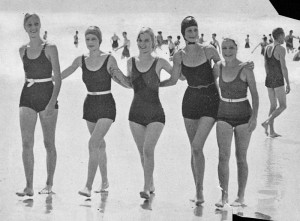anorexia: a child’s disease?
“Body image” is arguably the biggest issue affecting today’s society. Anorexia, bulimia and obesity are all eating disorders and eating disorders do not discriminate. It doesn’t care if you are female or male, thin or fat and, most importantly, what age you are , which is what a young girl in the UK found out.
Sophie Anderson was just 11 when, after her school had its students weighed as part of the National Child Measurement Programme, her parents received a letter, complete with graphs, that explained she was at risk of being overweight. Sophie was a typical, happy eleven-year-old who loved food, yet after this letter she developed a dangerous eating disorder: anorexia. Now thirteen and recovering she has spoken out about her ordeal, which included being force-fed through tubes after her organs were at risk of shutting down.
To some this may seem uncommon for a girl of that age, but, sadly, with the pressure to be thin now being forced upon children it is becoming increasingly common. Where are kids getting these ideas from? Shouldn’t they be happy and blissfully unaware of what the media portrays as the ‘ideal’ weight? Health is becoming a big part of our society and with television shows, magazines and blogs revolving around dieting, exercise and fitness, suddenly you can’t escape from it. For some people this doesn’t turn into a problem; in fact, it is probably a great tool for them to lead a healthy lifestyle. But for Sophie, who says she is a perfectionist, and young people just like her, this just plants the seed for what can develop into a terrible disease.
It’s hard to pin point what causes anorexia and no two cases are really the same. It is a mental disorder that has physical attributes and is incredibly hard to cure. While many say it is a way for sufferers to take control of their life and body, funnily enough, they lose control in the end. A good way to describe it is through an analogy: you are driving a car with a passenger (the eating disorder) next to you, when all of a sudden you have swapped places and the passenger is driving, and you have relinquished your control. It’s a constant fight in your head between this monsterous passenger and you. For others it can be about the ‘perfect weight’, to want to look like the models and actresses in the magazines. Most have a distorted image of themselves, whilst you may see a stick thin girl she will see an over-weight lump. And this can involve excruciating experiences of low self-esteem and self-loathing.
At age 11, most girls are starting to change; they are developing breasts, hips and waists. They are beginning to define themselves as women, which should be a beautiful thing. These girls are sensitive to the changes; not one girl is the same and they develop at different times to their class mates. We all know that school can be hell for some kids and children don’t often think about the repercussions to their nasty words. After the letters were sent home it was only natural for the children to talk about it and compare. It would be bad enough to have to suffer that humiliation at home, but suddenly you can’t escape from it at school either. Children don’t always have tact and, once the other kids found out what Sophie’s letter said, it would cause a few jokes and maybe even constant bullying.
We live in a world where parents and teachers need to be more aware of how kids treat each other in the playground and to attempt to control the situations. How could the staff at Sophie’s school not see that they were subjecting children to a high chance of bullying and low self esteem by forcing them to hop on the scales? And who are they to tell a child that they have a risk of becoming overweight? Looking at a chart can’t necessarily tell you this and no two children are the same. Much like no two women are the same – some have bigger breasts which will weigh more, others are genetically given wider hips. Young girls shouldn’t be taught to be ashamed or scared of their bodies.
There should be no ideal body type for adults or children; it should be an individual body type. Schools should be teaching the kids how to be happy and healthy and to celebrate their bodies. Let the kids run around outside and enjoy healthy exercise, show them how to make fruit and vegetables yummy. Tell them that diets aren’t always the answer and a thin body doesn’t always equal happiness. These minds are so young and impressionable, and what you teach them could stay in their minds forever.


